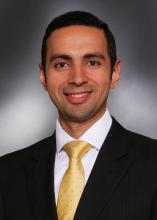- International medical graduates face significant challenges entering the US medical system, particularly in cardiothoracic surgery.
- Despite the challenges, successful IMG candidates in cardiothoracic surgery tend to exhibit resilience, self-motivation, and exceptional academic and interpersonal skills.
- With a predicted 30% shortage of cardiothoracic surgeons by 2036, integrating and retaining IMGs is critical to meeting the growing demand, particularly in underserved and rural areas.
International medical graduates (IMG) are physicians who obtained their medical degree from a medical school outside the US. Moreover, US citizens who graduated from non-US medical schools are still considered international medical graduates. Overall, IMGs comprise about 25% of the physician workforce in the US.

The residency match rate is significantly lower for US-IMGs and non-US-IMGs compared to US graduates. In 2024, 14,772 IMGs applied for residency in the US, and 9,045 matched in a US residency spot, which is about 60% overall match rate. This rate has been stable over the past few years.
When looking closely at the IMG match rate into general surgery and thoracic I-6 programs, this rate is much lower at 10% for general surgery and 0% for integrated thoracic surgery. Despite the very competitive match rate in our specialty, especially in the last few years, we see well-qualified IMGs matching in cardiothoracic fellowships every year.
These IMG applicants tend to be self-driven and resilient, which are necessary traits to succeed in our field. They are usually the top of their medical schools. Not only are they academically well accomplished, but they also have great interpersonal skills, which allows them to excel in a demanding training environment in a new country and a different healthcare system.
Securing a spot in an I-6 program or a cardiothoracic surgery fellowship or a 4+3 thoracic program is not the only thing needed to practice cardiothoracic surgery in the US as an IMG. Most of the IMG applicants need visa sponsorship, which is renewed annually while they are in training and has a limit of seven years.
The seven-year limit may hinder the trainees’ ability to participate in dedicated time in the lab during residency. After training is done, they need to go to their home country for two years prior to applying for jobs in the US.
An alternative to having to leave the country is finding an unfilled position in an underserved region or a facility that provides care for an underserved population and working there for 3-5 years, which will waive the two-year rule. Even then, this process is daunting and may take anywhere from six to nine months from the time a surgeon signs a job contract to the time they can start their practice.
All things considered, pursuing a career in cardiothoracic surgery in the US as an IMG is very challenging, but it is not impossible. We should continue to work on training and retaining IMGs in our field given the growing need for cardiothoracic surgeons and predicted shortage, which will more significantly impact our rural and underserved patient populations.
The National Center for Health and Workforce analysis is predicting a shortage of cardiothoracic surgeons of about 30% by 2036 given our aging population and predicted attrition rate (Workforce Projections (hrsa.gov)). There are many great examples of IMG surgeons who have contributed to our field over the years. In addition, many IMG cardiothoracic surgeons are currently working in rural areas and serving underserved communities.
Training and integrating IMGs in the field of cardiothoracic surgery wouldn’t have been possible without mentors who advocate for their trainees and mentees. My advice to the young IMG surgeons and trainees is to identify these mentors and work with them. You should know that your hard work will eventually pay off. You didn’t get to where you are right now by coincidence. Believe in your skills and capabilities and continue to work towards your goal.
